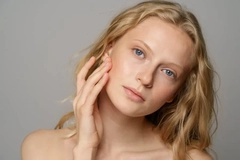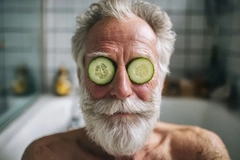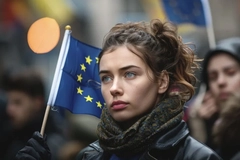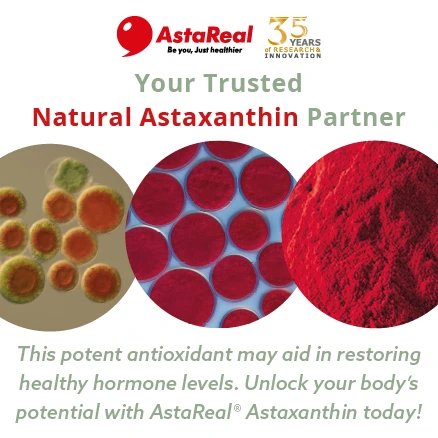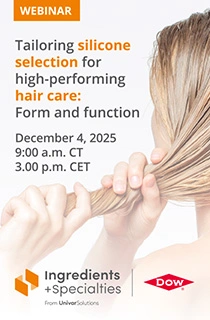EU declares butylparaben unsafe for children and bans 20 cosmetic ingredients
The EU’s Scientific Committee on Consumer Safety (SCCS) has declared butylparaben only safe for children’s products at low concentrations. Classified as an endocrine disruptor, the committee says the preservative is unsafe for children under 10 to use in multiple personal care applications simultaneously, at the current legal limit of 0.14%. It has also said that the legal concentration level should be lowered across different formats.
The committee found that total exposure from lotions, creams, and other products could reach 952 µg/kg/day in infants, while the safe limit is 245 µg/kg/day.
Following this announcement, the EU added 20 more substances to its list of banned cosmetic ingredients, as part of Regulation (EU) 2025/877. These newly banned ingredients are classified as carcinogenic, mutagenic, or harmful to reproduction (CMRs). The ban takes effect on September 1 this year.
Vulnerable exposure
Butylparaben is a common chemical preservative used in products such as shampoo, lotions, and toothpaste to prevent bacteria and mold. However, it is now considered unsafe due to its potential to disrupt the endocrine system. Endocrine disruptors mimic estrogen and interfere with hormone function.
Young children whose bodies are still growing are at an increased risk, mainly because their skin is more absorbent than adult skin, and children are more likely to ingest small amounts of the products, especially in toothpaste formats. Studies have shown that high or repeated exposure to butylparaben may mimic estrogen, a key hormone.
While the effects in humans are still being researched, animal studies and toxicological data suggest that long-term or high-dose exposure to butylparaben could increase the risk of hormone imbalance, developmental and reproductive issues, delayed puberty or early onset puberty, and changes in reproductive organ function.
.jpg) Children may be exposed to harmful levels of an endocrine disruptor. The SCCS found that young children can be exposed to unsafe levels of butylparaben when using multiple products containing the ingredient, even at the current legal limit.
Children may be exposed to harmful levels of an endocrine disruptor. The SCCS found that young children can be exposed to unsafe levels of butylparaben when using multiple products containing the ingredient, even at the current legal limit.
However, the committee says butylparaben can be considered safe only if it is used in a single product at a time and the concentration is kept low. Even under those conditions, body lotion is still considered too risky due to high skin absorption.
To ensure safety across different product types, the SCCS supports lowering the concentration to 0.002% in leave-on products, 0.092% in oral care, and 0.14% in rinse-off products. At these reduced levels, butylparaben may be safely used in combination — but only if these limits are strictly followed.
Dangerous mixing
The SCCS’s final opinion is based on updated exposure data examining how children use multiple products daily. The committee studied children from six months to 10 years old and considered how much butylparaben they absorb topically or orally.
The results showed that children using several butylparaben-containing products daily, such as face cream, hand soap, and toothpaste, are at risk of too high exposure.
Body lotion was found to be the biggest concern. In some cases, using body lotion alone could push exposure levels over the safe limit because it is applied to large areas and left on the skin.
The committee clarifies that its opinion does not cover sprays, such as aerosols or mouth sprays, as these formats could be inhaled.
With the SCCS’s opinion, brands using butylparaben must examine how their products are used, especially if they are aimed at babies or young children. Companies must lower the ingredient levels or switch to alternatives if multiple products are likely to be used together. This could mean reformulating popular products, especially leave-on items like lotions.
Rethinking formulations
In a push for consumer safety, the EU banned 20 more cosmetic ingredients. This announcement also increased pressure on brands to reformulate certain products..jpg) The EU makes moves to make cosmetics safer for consumers.
The EU makes moves to make cosmetics safer for consumers.
The list of ingredients includes chemicals such as diphenyl (2,4,6-trimethylbenzoyl) phosphine oxide (TPO), used in UV-curing nail gels and coatings. The ingredient acts as a photoinitiator that triggers the hardening process under UV light.
These banned substances are all CMR-classified, and some, including TPO, were previously allowed under limits.
There will be no grace period for the phase-out of these ingredients. Products already on the market, both in brick-and-mortar stores and online, must be pulled if they contain any of the banned substances.
Regulations differ outside the EU. China, for example, allows butylparaben at up to 0.4% in single-use products, meaning global brands may need different versions of the same product for various markets.

